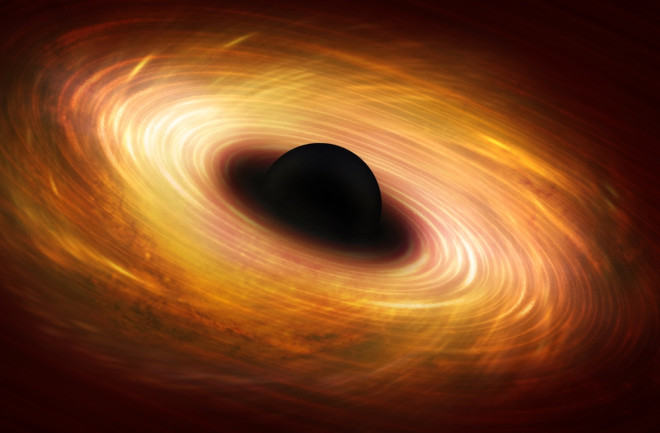Supermassive black holes take time to form. That’s why scientists are puzzling over the discovery of one that existed a mere 570 million years after the Big Bang, only 100 to 300 years after the first stars began to form in the nascent universe.
Observations from the James Webb Space Telescope (JWST) have indicated that the black hole – at the center of an early galaxy, CEERS 1019 – was busy some 13 billion years ago, sucking down gas and growing larger. Meanwhile, its host galaxy was creating new stars within its strange, primordial shape of three bright clumps surrounding the black hole.
JWST used its infrared-detecting powers to detect the greatly redshifted light of CEERS 1019 and estimate the age of the black hole, the earliest-growing supermassive one yet discovered.
Stars Made From Soup
“We’re not used to seeing so much structure in images at these distances,” said Jeyhan Kartaltepe, an associate professor of astronomy at the Rochester Institute of Technology, in a statement. “A galaxy merger could be partly responsible for fueling the activity in this galaxy’s black hole, and that could also lead to increased star formation.”
The earliest-ever supermassive black hole weighed in at about 9 million solar masses, about twice the size of the supermassive black hole at the center of the Milky Way – but still considered small. Astronomers have discovered others from the early universe that weighed more than a billion times the mass of the sun.
Scientists still know little about how – some 200 million years after the Big Bang – a dark soup of hydrogen and helium formed the first stars. They can also only conjecture how black holes in the early universe grew so large, so quickly.
JWST’s Cosmic Evolution Early Release Science (CEERS) Survey is seeking answers to these questions and uncovering new ones along the way.
New Galaxies and Black Holes
The project also recently reported the discovery of two younger black holes that existed 1 billion and 1.1 billion years after the Big Bang. And the team has just studied a host of 11 old galaxies that existed when the universe was between 470 million and 675 million years old.
“Webb was the first to detect some of these galaxies,” explained Seiji Fujimoto, a postdoctoral researcher and Hubble fellow at the University of Texas-Austin, in a statement. “This set, along with other distant galaxies we may identify in the future, might change our understanding of star formation and galaxy evolution throughout cosmic history.”
Read More: This Is What a Black Hole Sounds Like

